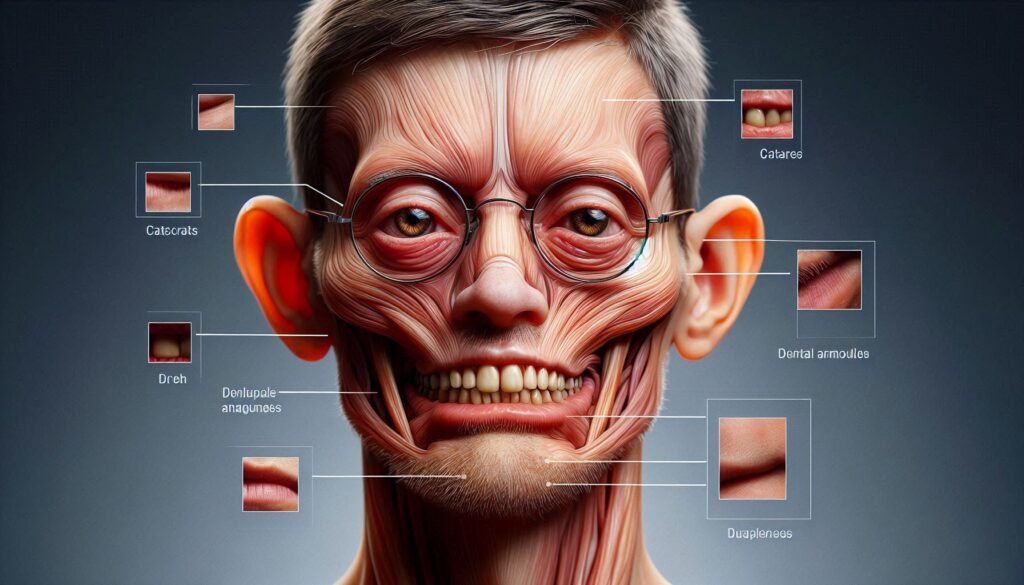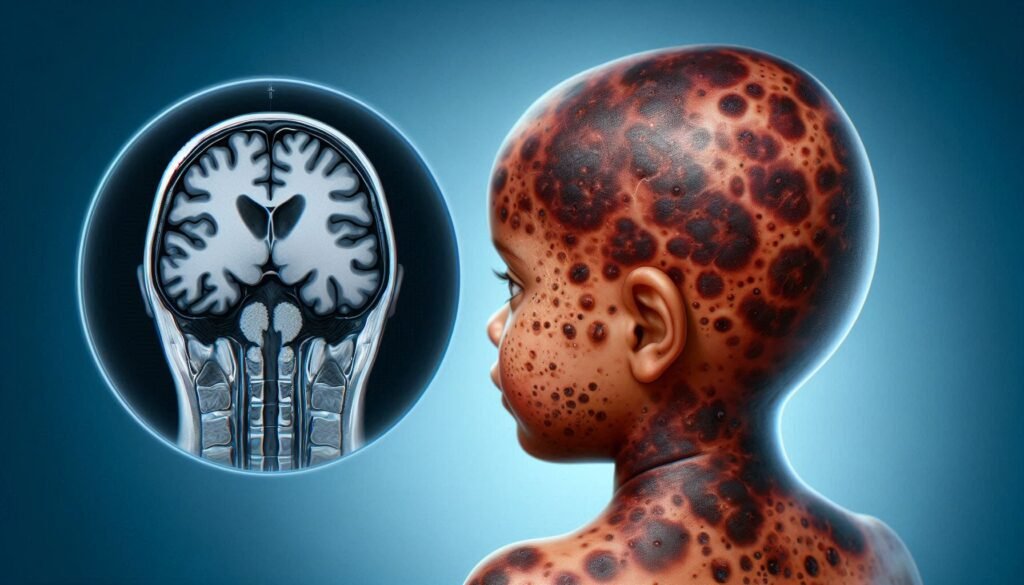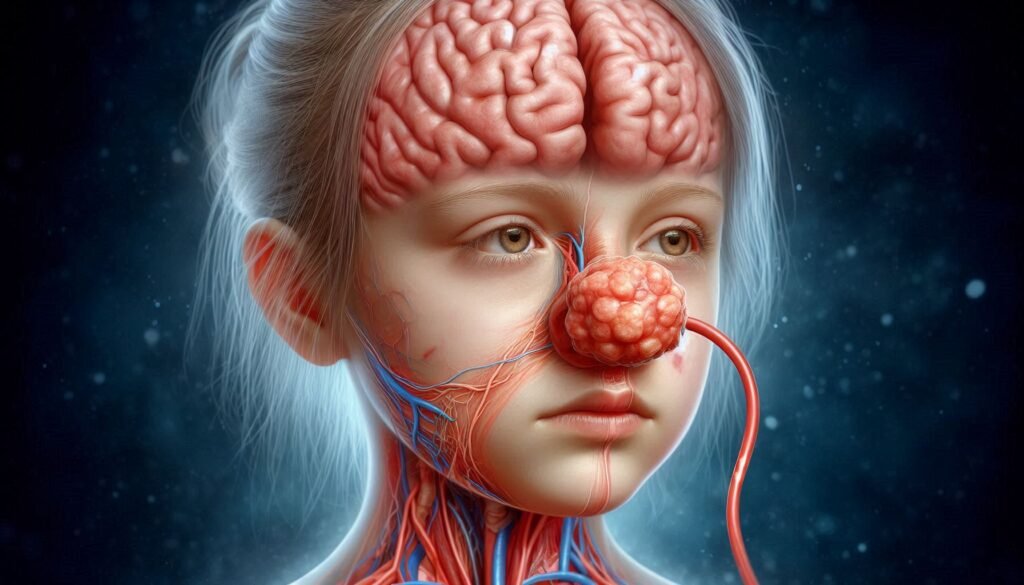Nance-Horan Syndrome is a rare genetic condition that often leaves those affected navigating a unique set of challenges. Characterized by X-linked congenital cataracts and dental anomalies, this syndrome can significantly impact various aspects of life. From ocular manifestations to distinctive facial features, understanding Nance-Horan Syndrome is crucial for both patients and their families.
As research progresses, awareness surrounding the syndrome grows. This blog post aims to shed light on its genetic underpinnings, clinical implications, and management strategies. Whether you’re directly impacted or simply seeking knowledge about this intriguing condition, join us as we explore everything you need to know about Nance-Horan Syndrome.

Nance-Horan Syndrome: X-Linked Congenital Cataracts and Dental Anomalies
Nance-Horan Syndrome (NHS) is primarily known for its connection to X-linked congenital cataracts and various dental anomalies. Affected individuals often present with bilateral cataracts, which can lead to significant visual impairment if not addressed early.
The condition is caused by mutations in the NHS gene, located on the X chromosome. These genetic alterations disrupt normal eye development, resulting in the formation of cataracts at birth or during infancy.
“How Does Renal Fanconi Syndrome Impact Kidneys?”
In addition to ocular issues, NHS frequently manifests as characteristic dental features. Individuals may exhibit malformed teeth, including abnormal shape and size. These dental anomalies contribute to challenges in oral health and aesthetics throughout life.
NHS Gene: Mutations and Their Role in Nance-Horan Syndrome
Nance-Horan Syndrome (NHS) is primarily linked to mutations in the NHS gene, located on the X chromosome. These genetic alterations disrupt normal cellular functioning and lead to various clinical features associated with the syndrome. Most often inherited in an X-linked manner, the mutation’s effects can differ between males and females.
The NHS gene plays a critical role in eye development and dental health. Mutations can result in congenital cataracts, dental anomalies, and other related conditions. Understanding these genetic changes is essential for accurate diagnosis and management of NHS.
“What Are The Signs of Riley-Day Syndrome?”
Research continues to explore how specific mutations correlate with disease severity. This information could open doors for potential therapies aimed at targeting underlying genetic issues linked to Nance-Horan Syndrome.
Ocular Manifestations: Congenital Cataracts and Other Eye Abnormalities
Ocular manifestations of Nance-Horan Syndrome primarily include congenital cataracts. These cataracts are present at birth and can significantly impair vision if not addressed early. They vary in severity, with some infants showing only minor clouding while others may have dense opacities.
“Why Does Restless Leg Syndrome Disrupt Sleep?”
In addition to cataracts, individuals with Nance-Horan Syndrome may experience other eye abnormalities. Microphthalmia, or abnormally small eyes, is one such condition that can occur alongside cataracts. Strabismus, commonly known as crossed eyes, is another potential issue affecting ocular alignment.
These eye conditions often necessitate regular ophthalmological assessments. Early detection and intervention are crucial for optimizing visual outcomes and enhancing the quality of life for those affected by this syndrome.
Dental Features: Characteristic Teeth Abnormalities in NHS
Individuals with Nance-Horan Syndrome often exhibit distinct dental abnormalities. These can include features such as conical teeth, which are narrower and pointed compared to normal incisors. This characteristic shape may affect both aesthetics and functionality.
“How Does Saethre-Chotzen Syndrome Affect Skull Growth?”
Additionally, hypoplasia of the enamel is commonly observed in NHS patients. This condition results in underdeveloped enamel, making teeth more susceptible to decay and requiring vigilant dental care.
Moreover, malocclusion is frequently reported among those with this syndrome. Misalignment of teeth can lead to challenges in chewing and speaking, emphasizing the importance of early orthodontic interventions for optimal outcomes. Regular dental evaluations are essential for managing these complexities effectively.
Facial Dysmorphism: Distinctive Facial Features of Nance-Horan Syndrome
Facial dysmorphism is a key characteristic of Nance-Horan Syndrome. Patients often exhibit unique facial features that can assist in diagnosis. These may include a prominent forehead, wide-set eyes, and distinctive eyebrows.
Additionally, individuals with this syndrome may have a flat nasal bridge and an elongated upper lip. The shape of the face can also appear more oval than typical. Such traits contribute to the recognizable appearance associated with NHS.
“What Causes Stockholm Syndrome? Psychology Guide”
These physical characteristics vary among affected individuals but are generally consistent within families. Awareness of these features aids healthcare providers in identifying Nance-Horan Syndrome early on for timely interventions and support strategies.
Developmental Delays: Cognitive and Behavioral Aspects
Children with Nance-Horan Syndrome often experience developmental delays that can affect cognitive and behavioral skills. These challenges may manifest as slower speech development or difficulties in social interactions. Early intervention is crucial to address these issues effectively.
Cognitive aspects vary significantly among individuals. Some may have average intelligence, while others might face more pronounced learning disabilities. Tailored educational strategies play an essential role in supporting their unique needs.
Behavioral concerns can include attention deficits or anxiety, which require careful management through supportive therapies and structured environments. Working closely with professionals ensures that children receive the guidance necessary to thrive both academically and socially.
Genetic Inheritance: X-Linked Pattern and Family Implications
Nance-Horan Syndrome (NHS) is inherited in an X-linked pattern. This means the NHS gene, located on the X chromosome, plays a critical role. Males have one X and one Y chromosome, while females have two X chromosomes.
When a mutation occurs in the NHS gene on an X chromosome, males are more severely affected due to their single copy of the gene. Females can be carriers with milder symptoms because they possess another normal copy of the gene.
Family implications can be significant for those with a history of NHS. Genetic counseling is essential for families who may carry this condition, as it helps assess risk factors and make informed decisions about future pregnancies or family planning options.
Diagnosis: Clinical Evaluation and Genetic Testing Approaches
Diagnosing Nance-Horan Syndrome begins with a thorough clinical evaluation. Physicians assess the patient’s medical history and perform a comprehensive physical examination, focusing on ocular and dental anomalies. These initial observations are crucial for identifying characteristic features of this condition.
Genetic testing plays a vital role in confirming the diagnosis. A blood sample is typically taken to analyze the NHS gene for mutations associated with Nance-Horan Syndrome. Advanced techniques such as whole exome sequencing can provide deeper insights into genetic variations that may not be detectable through standard tests.
Collaboration among specialists enhances diagnostic accuracy. Ophthalmologists, dentists, and geneticists work together to evaluate symptoms holistically, ensuring all aspects of the syndrome are addressed effectively during diagnosis and management planning.
Ophthalmological Management: Cataract Surgery and Visual Rehabilitation
Ophthalmological management for individuals with Nance-Horan Syndrome primarily focuses on addressing cataracts and other visual impairments. Early detection is crucial, as congenital cataracts can significantly affect visual development. Regular eye examinations help monitor changes and determine the best course of action.
Cataract surgery is often necessary to restore vision. This procedure typically involves removing the cloudy lens and replacing it with an artificial one. Skilled ophthalmologists tailor their approach based on each patient’s unique needs, ensuring optimal outcomes.
Visual rehabilitation follows surgery to enhance functional vision. Occupational therapists may provide resources like low-vision aids or adaptive techniques tailored to daily activities. These interventions support patients in adjusting to their new visual capabilities, fostering independence and improving overall quality of life.
Dental Care: Orthodontic and Restorative Interventions
Dental care for individuals with Nance-Horan Syndrome requires a tailored approach. Many patients exhibit distinctive teeth abnormalities, such as hypodontia or malocclusion. These issues can lead to challenges in oral hygiene and overall dental health.
Orthodontic interventions are often necessary to correct alignment problems. Braces or other devices may be recommended to improve bite functionality and aesthetics. Early intervention is key, as it can help prevent more severe complications later on.
Restorative dentistry plays a vital role in managing the unique dental needs of NHS patients. Treatments like crowns, bridges, or implants may be essential for restoring function and appearance. Regular check-ups ensure that any emerging issues are addressed promptly, maintaining optimal oral health throughout life.
Developmental Support: Early Intervention and Educational Strategies
Early intervention is crucial for children with Nance-Horan Syndrome. Identifying developmental delays early allows for tailored support that can significantly enhance a child’s learning experience. Programs focused on speech, occupational, and physical therapy are beneficial in addressing specific needs.
Educational strategies should be individualized to accommodate varying cognitive abilities. Implementing personalized learning plans can help these children thrive in academic settings. Use of visual aids and hands-on activities often improves engagement and understanding.
Collaboration between parents, teachers, and specialists creates a supportive environment conducive to growth. Regular assessments ensure that the interventions remain effective as the child develops. This teamwork facilitates not just educational success but also social integration among peers.
Psychosocial Impact: Living with Visual and Dental Challenges
Living with Nance-Horan Syndrome presents unique psychosocial challenges. Individuals often face difficulties due to visual impairments and dental anomalies, which can affect self-esteem and social interactions. The impact is especially pronounced in childhood, where peer acceptance plays a crucial role.
Social stigma may arise from noticeable facial features or the need for corrective measures like glasses or braces. These factors can lead to feelings of isolation and anxiety as individuals navigate relationships. Support from family and friends becomes essential during these formative years.
Educational environments also pose challenges. Teachers may not fully understand the needs associated with NHS, leading to potential gaps in support. Early interventions that address these psychosocial aspects are vital for fostering resilience and promoting positive mental health outcomes throughout life.
Gender Differences: Variable Expression in Males and Females
Nance-Horan Syndrome exhibits notable gender differences in its expression. Males typically present with more severe symptoms compared to females. This variability can often lead to a wider range of manifestations.
In males, the clinical features tend to be pronounced, including significant ocular and dental abnormalities. They may also experience developmental delays that are more prominent than those seen in affected females.
Females often display milder forms of the syndrome, which may result in underdiagnosis or late diagnosis. Their cognitive and behavioral challenges might not be as readily apparent, complicating management strategies for families and healthcare providers alike. Understanding these differences is essential for effective treatment planning and support systems tailored to each individual’s needs.
Long-term Prognosis and Quality of Life Considerations
Individuals with Nance-Horan Syndrome (NHS) can face a variety of challenges that impact their long-term prognosis. The severity of symptoms often varies widely, influencing overall development and health outcomes. While some may experience significant visual impairment or dental issues, others might have milder manifestations.
Quality of life for those affected by NHS is heavily dependent on early intervention and comprehensive care. Access to specialized services in ophthalmology, dentistry, and developmental support plays a crucial role in enhancing daily functioning and well-being.
Psychosocial factors also contribute significantly to the quality of life for individuals with NHS. Support from family, friends, and community resources can help mitigate feelings of isolation or frustration related to the syndrome’s challenges. This holistic approach fosters resilience and empowerment among patients as they navigate their unique journeys.
Genetic Counseling: Family Planning and Prenatal Testing Options
Genetic counseling is a crucial resource for families affected by Nance-Horan Syndrome. It provides essential information about the genetic aspects of the condition, particularly its X-linked inheritance pattern. Families can learn about the likelihood of passing NHS to future generations.
During counseling sessions, healthcare professionals discuss family planning options tailored to individual circumstances. They help prospective parents understand their risks and make informed decisions regarding conception and pregnancy.
Prenatal testing options are available for those with a known family history of Nance-Horan Syndrome. Techniques like chorionic villus sampling (CVS) or amniocentesis can detect genetic mutations early in pregnancy. This allows families to prepare emotionally and medically for any challenges that may arise if the fetus is diagnosed with NHS.
Latest Research: Molecular Mechanisms and Potential Therapies
Recent research into Nance-Horan Syndrome has focused on understanding the molecular mechanisms underlying its manifestations. Studies have identified specific mutations in the NHS gene that disrupt normal eye and dental development. This insight is crucial for developing targeted therapies.
Innovative approaches, such as gene therapy, are being explored to correct or compensate for these genetic defects. These strategies aim to restore function at a cellular level, potentially improving outcomes for affected individuals.
Furthermore, researchers are investigating pharmacological interventions that could mitigate symptoms associated with Nance-Horan Syndrome. By targeting pathways influenced by NHS mutations, it may be possible to enhance quality of life and broaden treatment options in the future.
Multidisciplinary Care: Coordinating Specialists for NHS Patients
Effective management of Nance-Horan Syndrome (NHS) requires a multidisciplinary approach. Coordinating care among various specialists is essential to address the diverse needs of patients with NHS. This often includes ophthalmologists, dentists, geneticists, psychologists, and developmental therapists.
Regular eye examinations are crucial for monitoring cataracts and other ocular manifestations. Dentists play a significant role in managing dental anomalies and ensuring proper oral health. Genetic counselors provide insights into inheritance patterns, helping families understand their options.
A comprehensive treatment plan may also involve occupational therapy to assist with developmental delays and behavioral support services tailored to individual needs. By working together as a team, healthcare providers can ensure that individuals living with Nance-Horan Syndrome receive holistic care that enhances their quality of life.


